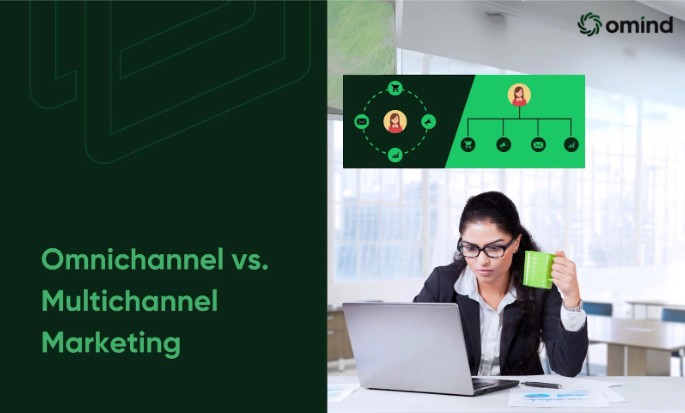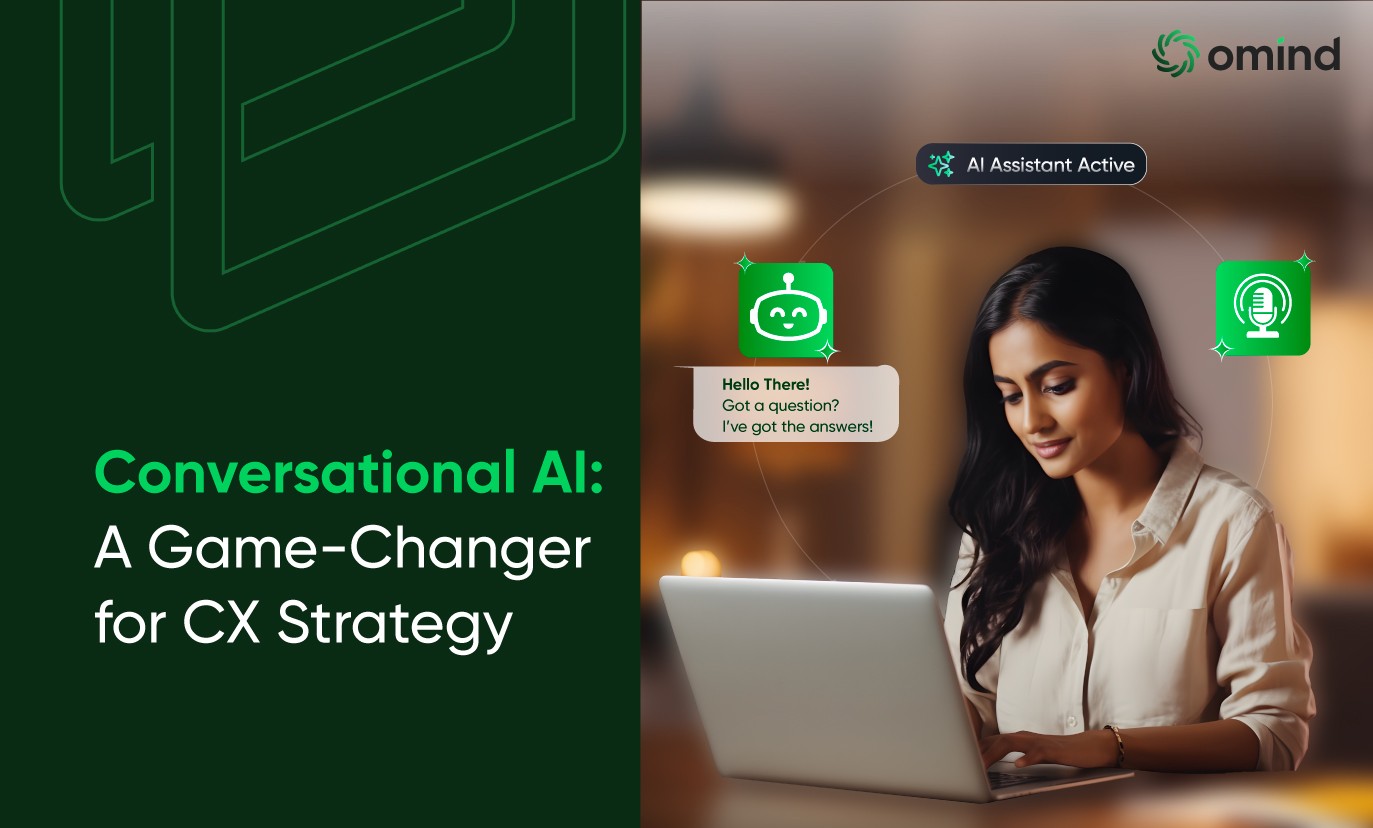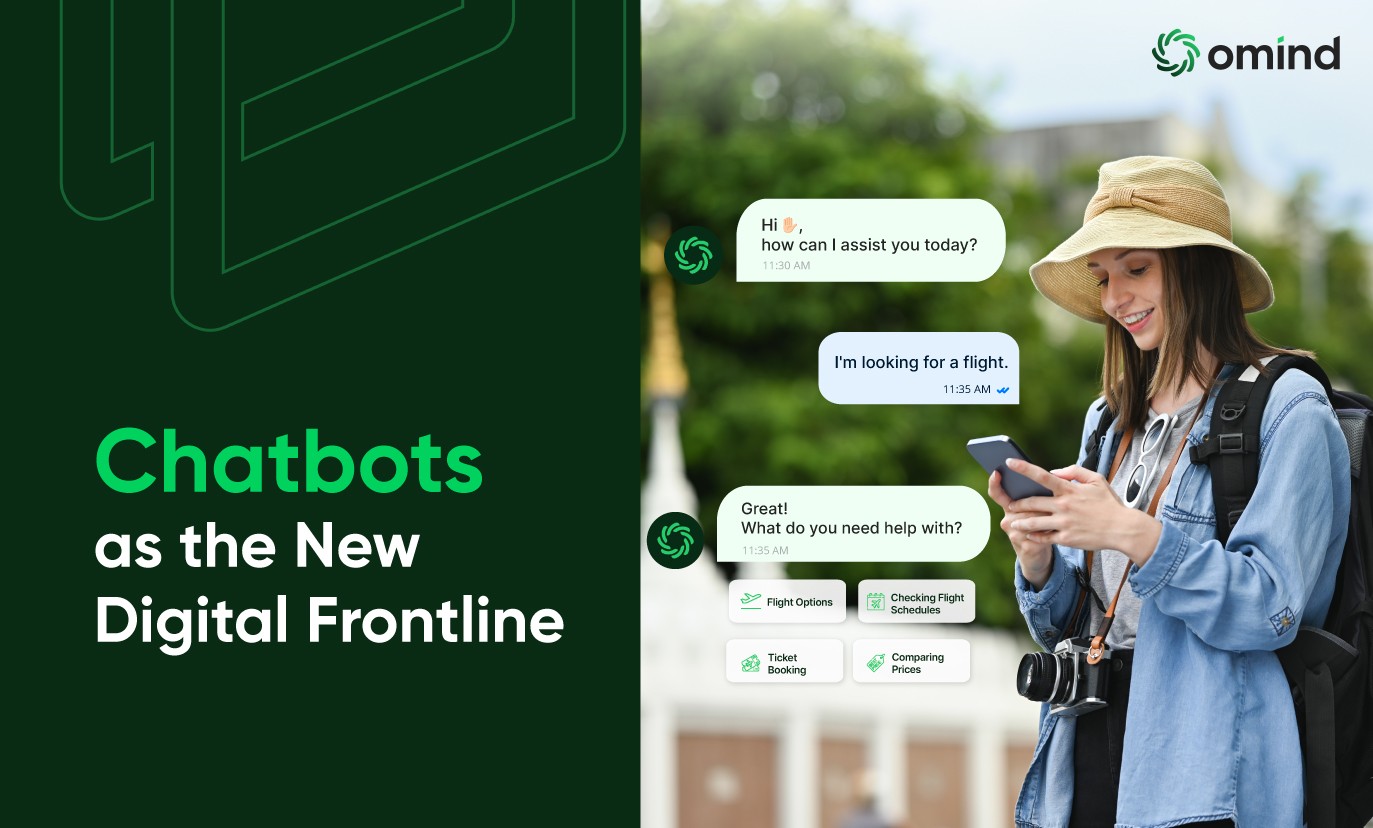In the world of marketing, the way you communicate with your visitors and customers is of extreme importance. And with so many avenues of marketing available, it can be difficult to choose a methodology for you. For instance, omnichannel and multichannel marketing are often used interchangeably, but they represent distinct approaches to engaging customers. Both strategies involve using multiple channels to reach consumers, but their focus, execution, and outcomes differ significantly. This article will highlight some key differences between these two marketing paradigms.
Omnichannel Marketing
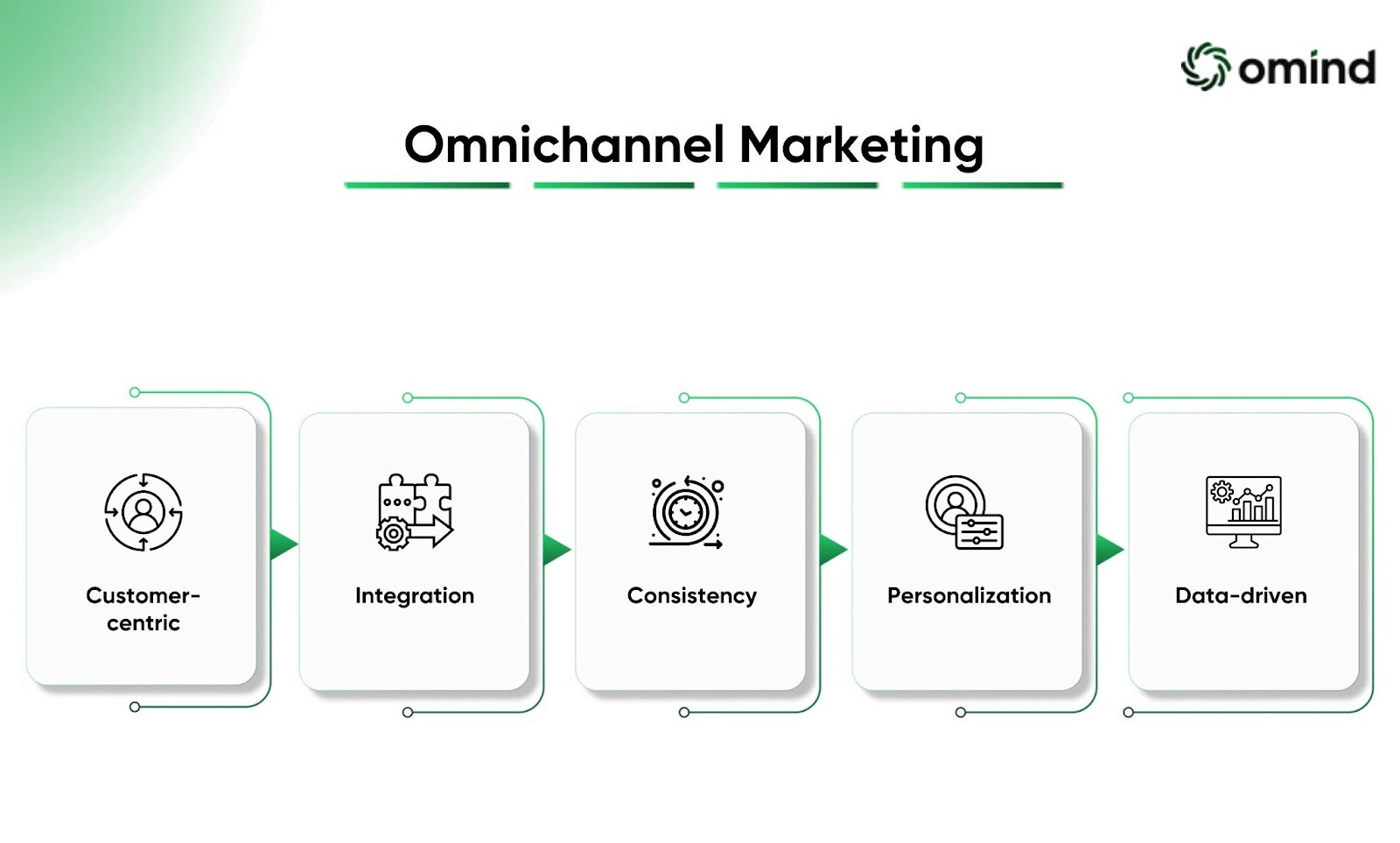
Omnichannel marketing is a strategic approach that delivers a consistent customer experience across multiple channels, thereby creating a cohesive journey for customers, regardless of where they interact with a brand. The goal is to ensure a unified customer experience across all touchpoints, from online platforms to physical stores.
Key characteristics of omnichannel marketing
Customer-centric: Places the customer at the heart of the strategy.
Integration: Combines various channels into a single, unified experience.
Consistency: Maintains a consistent brand message and identity across all channels.
Personalization: Tailors interactions and offers based on individual customer preferences.
Data-driven: Utilizes customer data to inform decisions and improve the customer journey.
A customer might discover a product through a social media ad, conduct further research on the brand's website, add the product to their cart on their mobile app, and then choose to pick up the product in-store for added convenience. Throughout the journey, the customer receives personalized recommendations and offers based on their previous interactions, which leads to a more satisfying experience.
Multichannel Marketing
Multichannel marketing involves using multiple channels to reach customers but without a unified customer experience. The focus is on individual channels operating independently. While it can be effective for reaching a wide audience, it often leads to fragmented customer journeys. It is suitable for very small businesses or organizations that don’t want to invest as much time on their marketing efforts, or those who have only a few channels active.
Key characteristics of multichannel marketing

Channel-centric: Focuses on individual channels rather than the overall customer experience.
Independent channels: Channels operate in isolation, without coordination or consistency.
Limited customer view: Lack of integrated data prevents a comprehensive understanding of customer behavior.
Major Differences Between Omnichannel and Multichannel Marketing
To make it easier for you to understand, we’ve compiled all the key differences between omnichannel and multichannel marketing below.
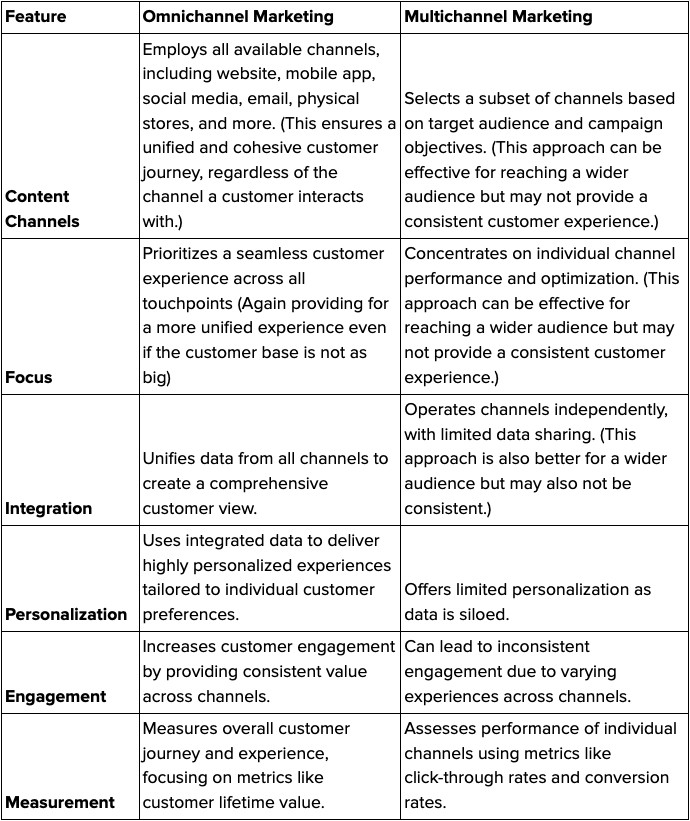
Choosing the Right Strategy for Your Business

If you’ve gone through the table and are still wondering what approach to use, selecting the optimal strategy mainly depends on factors like business goals, resources, and customer base.
Omnichannel: Requires significant investment in technology, data integration, and organizational alignment. Offers long-term benefits in terms of customer loyalty.
Multichannel: Less complex and resource-intensive, but may limit growth potential. Suitable for businesses starting their marketing journey.
Implementation Considerations
Successful implementation of either strategy demands careful planning and execution. Omnichannel marketing necessitates robust technology infrastructure, data management capabilities, and a customer-centric culture. Multichannel marketing requires effective channel selection, management, and measurement.
Transitioning from multichannel to omnichannel is a gradual process. It involves breaking down walls, integrating data, and aligning teams around a shared customer focus.
The Best Approach To Take
Omnichannel and multichannel marketing represent distinct approaches to engaging customers. While multichannel marketing focuses on individual channels, omnichannel prioritizes a unified customer experience. The optimal strategy depends on a business's specific goals, resources, and customer expectations. By understanding the key differences, businesses can make informed decisions to drive growth and customer satisfaction. Ultimately, the goal is to deliver exceptional customer experiences that help you build advocacy. Whether you choose omnichannel or multichannel, a customer-centric mindset should be the foundation of your marketing efforts.
If you’d like a helping hand when it comes to marketing, CX and marketing automation, Omind is your answer. Omind leverages AI to bring to you a conversational platform that helps visitors engage with your business and turns visitors into paying customers. To see how our platform works, schedule a demo at this link today.
AUTHOR
Team Omind
Empowering Businesses with Unified Customer Experience Platform, Leveraging Advanced AI and Intelligent Automation
PRODUCT
Marketing AI
Share LINK
Related Blogs
